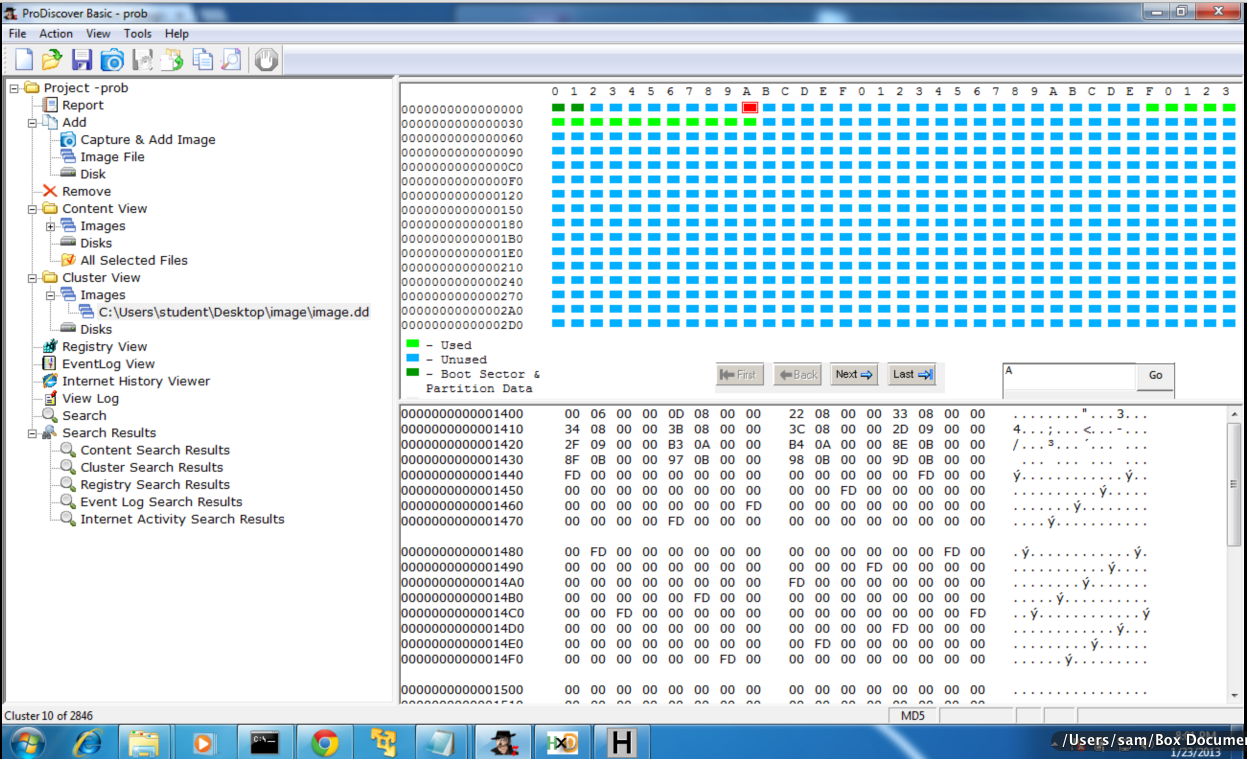

- #PRODISCOVER BASIC HPA DCO HOW TO#
- #PRODISCOVER BASIC HPA DCO FULL#
- #PRODISCOVER BASIC HPA DCO SOFTWARE#
The National Institute of Standards and Technology (NIST) has conducted tests on common acquisition tools: If an error is encountered while reading from the suspect drive most programs will write a zero to the destination drive. The chunks of data that are transferred each time are typically a multiple of 512 bytes. The general procedure for acquiring a storage device is to copy one byte from the original storage device to a destination storage device and repeat the process. The first phase of a digital investigation is the preservation of the digital crime scene. The BIOS adds one more location where an error can be introduced into the final image, and it should be avoided if better alternatives exist.
#PRODISCOVER BASIC HPA DCO FULL#
If the tool uses the BIOS make sure it reports the full disk before you acquire the disk. Make sure you know how your acquisition tool acquires the disk: The reason is usually because one of the tools used the BIOS and the other did not. Occasionally you hear of someone imaging a hard rive using two different tools and got different sized images. If BIOS thinks it is an 8 GB, but the disk is really 12 GB, the INT 13h function provides access to only the first 8 GB. When the BIOS is used, there is a risk that it may return incorrect information about the disk.
#PRODISCOVER BASIC HPA DCO SOFTWARE#
The BIOS works as a middleman between the software and the hard disk
#PRODISCOVER BASIC HPA DCO HOW TO#
Software Access needs to know how to address the controller and how to issue commands to it. Two methods that software can use to access the disk:ĭirectly through the hard disk controllerĭirect Access: Software communicates directly with the hard disk controller and then communicates with the hard disk.Īccessing the hard disk directly is the fastest way to get data to and from the disk, but it requires the software to know quite a bit about the hardware. HPA=A special area of the disk that can be used to save data and a casual observer might not see it.ĪTA-6 Added the Device Configuration Overlay (DCO)Ī DCO can hide sectors at the end of the disk, in addition to sectors hidden by an HPA

Parallel ATA (PATA) is an interface standard for the connection of storage devices such as hard disks, floppy drives, and optical disc drives in today's computersĪTA interface itself evolved from Western Digital's original Integrated Drive Electronics (IDE) interfaceĪTA-3 Introduced optional security features, passwords on BIOS, seeĪTA-4 Added the Host Protected Area (HPA) Typical hard drive cluster sizes range from 4 to 64 sectors (2-32 KB)īut they result in empty space slack at the end of a file. The hard drive controller translates LBA (physical geometry) into CHS addressing (logical geometry) used by the operating system and BIOSĪ sector is the most basic physical I/O unit on a diskįiles are linked lists on the disk reading/writing one sector at a time would be very slowĬlusters are logical groupings of sectors by an operating system to optimize I/O LBA is an absolute sector addressing scheme used by ZBR ZBR allows a variable number of sectors/trackĮnabled due to sophisticated electronics built into HDD controllerĪllowed manufacturers to optimize the disk surface and build higher-capacity drivesĬHS values no longer represent actual geometry The outside tracks are less densely packed with bits than inside tracks On small (<=8GB) drives, every track has the same number of sectors

The translation is handled by the disk drive controller In fact, this drive might very well have two platters (i.e., 4 heads) That is, this is what it says on the drive! How sectors are really numbered on a drive?Ĭould 8 platters really fit in that less than 1 inch space?ĬHS = 13,328/15/63 is the reported geometry. Number of cylinders (tracks), heads (sides), and sectors (aka CHS) uniquely identify the physical geometry of the storage units on a diskĬapacity = Cylinders × Heads × Sectors × sector_sizeĨ. Note: Sector ize is usually 512 bytes long: Sector is the smallest unit that can be read or writtenĮach byte in memory can be accessed independently


 0 kommentar(er)
0 kommentar(er)
